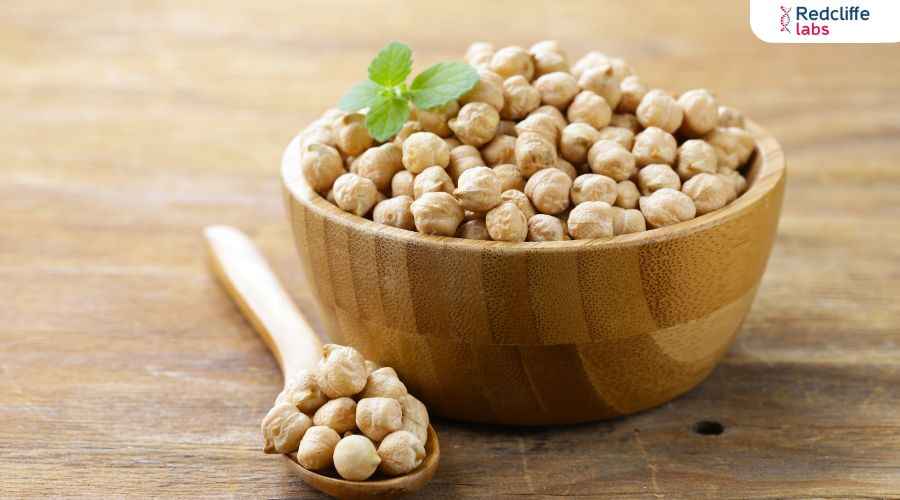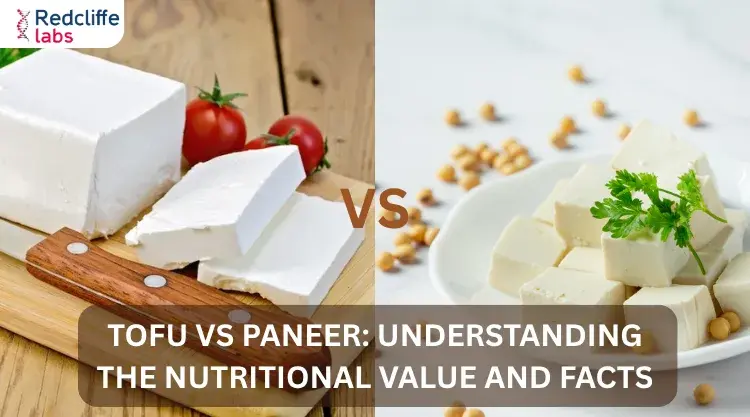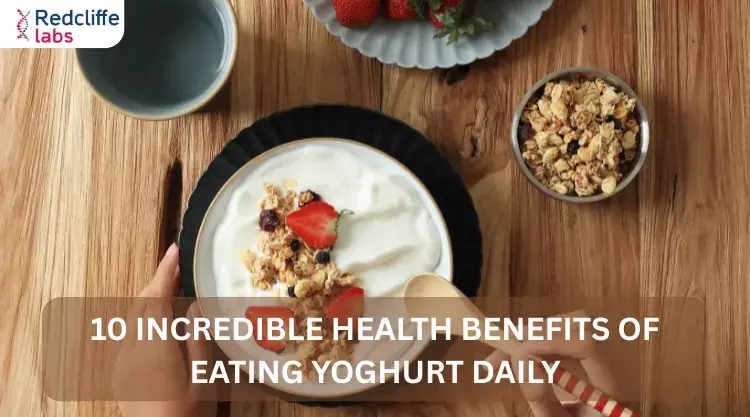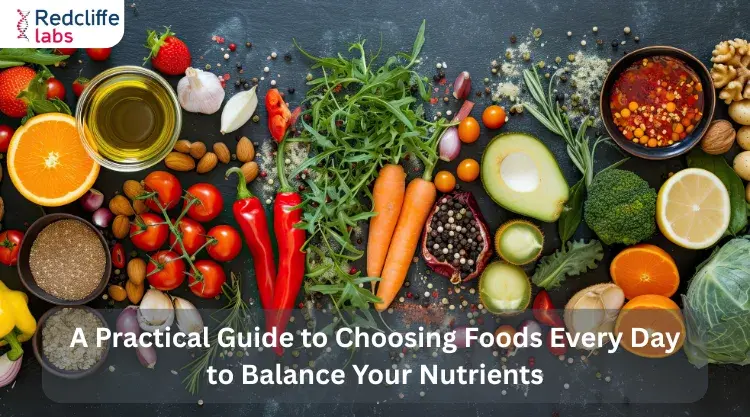Chickpeas protein per 100g: Benefits, Nutrition, & More!

Medically Reviewed By
Dr. Geetanjali Gupta
Written By Sheena Mehta
on Oct 7, 2024
Last Edit Made By Sheena Mehta
on Jul 19, 2025

Do you feel protein deficiency in your body?
Are you a vegan seeking a plant-based protein source to meet your needs?
Are you someone who wants a one-stop solution for nutrient-dense food?
If yes, this blog is for you. Chickpeas are a plant-based source of protein and are loaded with essential vitamins, minerals, and fiber. This makes them a valuable addition to a well-balanced diet.
Before we delve into the chickpea protein per 100 g, read through the history, interesting facts, and uses of chickpeas to ensure you stay on this page. Here we go!
History of Chickpeas
Cicer arietinum, or garbanzo bean, is commonly known as chickpeas and is an excellent protein source. In Turkey, chickpeas appeared about 3500 BCE, and in France, 6790 BCE. The leftovers of chickpeas from the Middle East are approximately 7,500 years old. This also means the cultivation of chickpeas is older than pottery.
5 Interesting Facts about Chickpeas
- The name chickpea comes from the French “chiche” and Latin “cicer arietinum," meaning “small ram.” It resembles a ram’s head.
- Chickpea leaves can be 5 to 15 mm in size. In some cultures, the young leaves are consumed as vegetables.
- India is the largest producer of chickpeas worldwide. They are cultivated in about 50 countries, including Myanmar, Pakistan, Turkey, Russia, and Ethiopia. In 2022, India produced about 13.5 million metric tons of chickpeas.
- Domesticated chickpeas (Cicer reticulatum) grow in southeast Turkey, where they are believed to have originated. Desi Chana is the wild ancestor of Cirer reticulatum.
- Chickpeas cultivated in the Mediterranean, South Asia, Southern Europe, North Africa, and South America are lighter in color and have a smoother coat. They are renowned as garbanzo beans.
Also read: https://redcliffelabs.com/myhealth/food-and-nutrition/how-much-protein-is-in-100g-tofu/
Seven different uses of chickpeas
Chickpeas are nutrient-dense and provide more than 20% of protein, fiber, folate, and minerals daily. Besides, they are also a moderate source of zinc, vitamin B6, thiamin, and magnesium. Different uses of chickpeas are as follows:
- Both humans and animals use chickpeas.
- Raw chickpeas are a healthier alternative to legumes such as peas.
- Soybean milk is high in protein and energy, allowing animals to produce milk equal to cereal or soy. Additionally, soybean milk can be replaced with chickpea meal for primiparous dairy buffaloes.
- Sulfur-containing amino acids are not present in chickpeas. However, they contain significant amounts of all the essential amino acids. Cooked chickpeas offer 50% of amino acids, which is high.
- In Arabic, chickpeas mean hummus. First, they are prepared and then ground into a paste.
- In some cultures, chickpeas are popped like popcorn and ground into flour.
- Last, you can add chickpeas to salads, chilis, soups, and stews.
Nutritional Value of a 100 g chickpeas
Let’s look at the nutritional profile of a 100 g serving of chickpeas:
| Calories | 364 |
| Total Fat | 6 g |
| Cholesterol | 0 |
| Sodium | 24 mg |
| Potassium | 875 mg |
| Total Carbohydrate | 61 g |
| Protein | 20 g (38% of the daily value) |
| Vitamin C | 6% |
| Iron | 34% |
| Vitamin B6 | 25% |
| Calcium | 57 mg (10% of the daily value) |
| Magnesium | 28% |
Instructions: Daily values (DA) may be higher or lower depending on your calorie needs.
A 100 g protein provides 20 g, equal to lentils or peas.
How much protein is found in 100 g boiled or soaked chickpea?
Chickpeas (chana) are both carbohydrates and protein. Many people prefer to consume them soaked or boiled. Incorporating 100 g of boiled or soaked chana in the diet can be beneficial, as it alone can offer 9 g of protein, almost the same as one ounce of lean meat, seafood, or poultry. This makes chickpeas a healthier, plant-based source of protein.
Apart from protein, chickpeas per 100 g contain essential nutrients, enhancing their nutritional value.
You can use chickpeas per 100 grams to make yummy chickpea salad for weight loss, soft and smooth hummus, or as it is. It is a versatile way to boost protein intake.
10 Health Benefits of Chickpeas Protein (garbanzo beans)
Chickpeas, or garbanzo beans, are legumes that offer various health benefits, mainly due to their protein content. Look below at the health benefits of eating chickpeas, keeping their rich protein profile in mind.
- High Protein Content
A 100 g cooked chickpea contains about 8-9 grams of protein. This makes them an excellent plant-based protein source for vegetarians and vegans. This protein helps in:
- Muscle repair and growth: Chickpeas contain significant amounts of essential amino acids that aid muscle growth and repair after physical activity.
- Tissue Repair: Protein is crucial for the body's overall functioning. Thus, eating chickpeas, which naturally contain protein, can help maintain healthy tissues and organs.
- Helps manage weight
The protein content in chickpeas is highly satisfying. You feel fuller for longer. Eating chickpeas can reduce unnecessary hunger pangs and overeating, supporting weight management.
- Helps Regulate blood sugar levels
Chickpeas or garbanzo beans have a low glycemic index (GI). Protein slows down carbohydrate absorption and aids in stabilizing blood sugar levels, which makes it beneficial, particularly for people with type 2 diabetes.
- It is good for the heart
Due to their fiber and protein content, chickpeas can regularly lower bad cholesterol (LDL). This, in turn, minimizes the risk of heart disease. The plant-based protein also improves lipid profiles.
- Promotes healthy digestion
As stated above, chickpeas are an excellent source of protein and fiber. This helps maintain a healthy gut microbiome, which supports digestion and nutrient absorption.
- Promotes strong bone health
Apart from protein, chickpeas contain calcium, phosphorus, and magnesium, strengthening bones and reducing the risk of osteoporosis as you age.
- Boosts Immune System
Our body needs protein to let the immune system work properly. Consuming protein-rich foods, such as chickpeas, can help build antibodies and maintain overall immunity. A one-cup serving of chickpeas can offer 14.5 g of protein, equivalent to black beans and lentils.
- Helps in cognitive health
The amino acids in chickpeas help produce neurotransmitters essential for memory, mood regulation, and brain function. A cup of chickpeas can offer about 70.2 mg of choline, encouraging cognitive health. Besides, protein from chickpeas can also prevent mental fatigue.
- Promotes skin health
Yes, you heard it right. The protein in chickpeas can promote skin health. It helps repair tissues and supports collagen production. Applying chickpea flour mixed with water can improve skin’s elasticity and reduce wrinkles and fine lines.
- Balance hormones
A 100 g serving of chickpea protein can help women balance their hormones. Chickpeas contain plenty of phytoestrogens. They mimic estrogens that perform several functions in the body, including alleviating symptoms related to hormonal imbalances, such as during menopause.
5 Unique Ways to Incorporate Chickpeas in Your Diet
Chickpeas are a wonderful plant-based source of protein for those who do not eat meat or animal products. Their mild flavor makes them a perfect addition to many sweet-to-savory dishes.
- Roasted chickpeas: In a pan, add cooked chickpeas, olive oil, and your favorite seasoning. Toss them. Now, roast the chickpeas in an oven until crispy. Your crunchy chickpeas are ready to eat.
- Chickpea salad: Mix cooked chickpeas with diced tomatoes, cucumber, bell pepper, and onion. Add fresh herbs and a simple dressing of olive oil, lemon juice, salt, and pepper. Serve chickpea salad as a side dish.
- Chickpea curry: Simmer chickpeas with coconut milk, onions, garlic, ginger, and tomatoes. Add your favorite curry spices. Your chickpea curry is ready. Relish it with rice for a gratifying meal.
- Chickpea burger: A chickpea burger can be prepared using mashed chickpeas, cooked quinoa, breadcrumbs, and spices. It can be baked or grilled until it turns golden. Serve it with your favorite toppings.
- Chickpea snacks: You can make chickpea snacks like chickpea flour crackers, muffins, or pancakes. Roasted chickpea snacks or chickpea-based chips are readily available.
Similarly, you can try chickpea stir-fry, wraps, and soup for more protein and overall wellness.
Adverse Side Effects
Chickpeas are healthier legumes you can incorporate into your diet. They offer several health benefits. However, chickpeas may cause gas, bloating, or irritable bowel syndrome due to their high fiber content. Be mindful of your chickpea consumption to avoid these signs.
Furthermore, some common allergies associated with chickpeas are itchy skin, rashes, redness, hives, or swelling.
Conclusion
Incorporate chickpeas in salads, stews, or soups to reap all the health benefits. Thanks to their rich protein content. Chickpeas are a versatile and cost-effective option for those who want to boost their plant-based protein intake.
Be cautious of its side effects. Little negligence can take a toll on your health. It is advisable to eat chickpeas in moderation, as excess of everything is bad and can spoil your mood.
Frequently Asked Questions: chickpea protein per 100 g
1. What are the benefits of chickpeas?
Some of the benefits of chickpeas include reducing the risk of type 2 diabetes, helping muscle and tissue repair, maintaining a healthy gut, and controlling appetite.
2. How much protein is present in 100 grams of chickpeas?
A 100g of cooked chickpeas offers 8–9 grams of protein. On the other hand, raw (dried chickpeas) contain around 19 grams of protein per 100 grams.
3. Are chickpeas a complete source of protein?
No, they are not. However, add grains like rice, quinoa, or whole wheat to chickpeas to relish a complete protein meal.
4. How much protein do adults require daily?
Typically, adults require around 50 grams of protein per day. Consuming 200-300 grams of chickpeas daily can provide around 16-27 grams of protein.
5. What are the side effects of chickpeas?
Excessive consumption of chickpeas can cause gas, bloating, and diarrhea. Oxalate in chickpeas may cause kidney stones. So, you need to be cautious.



